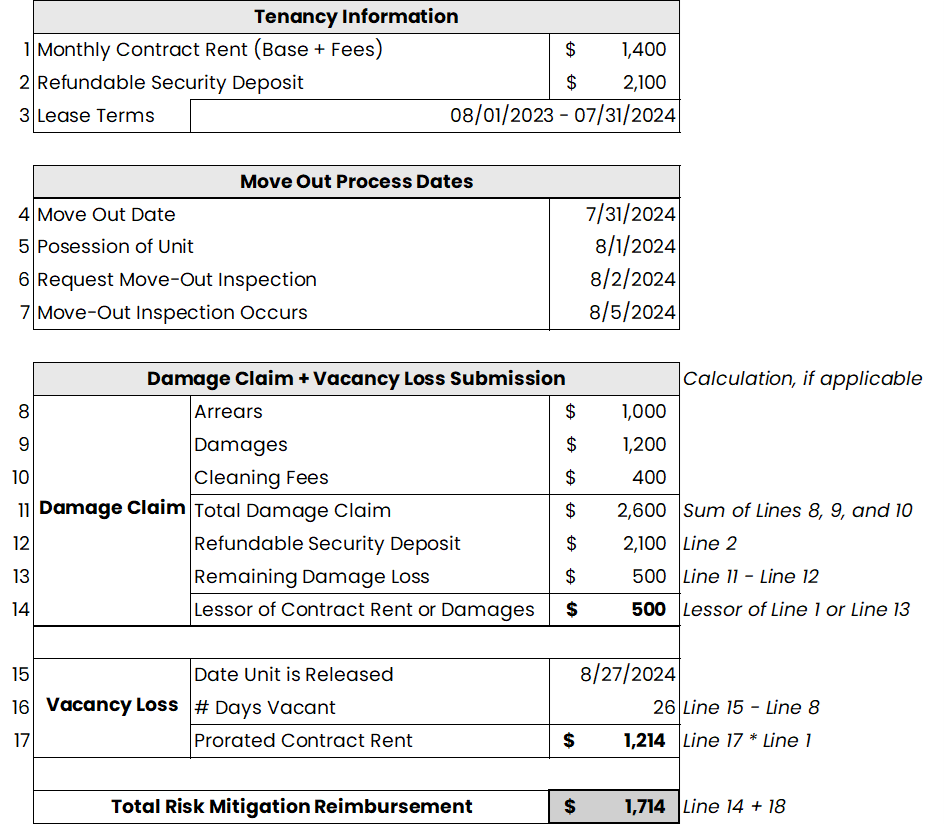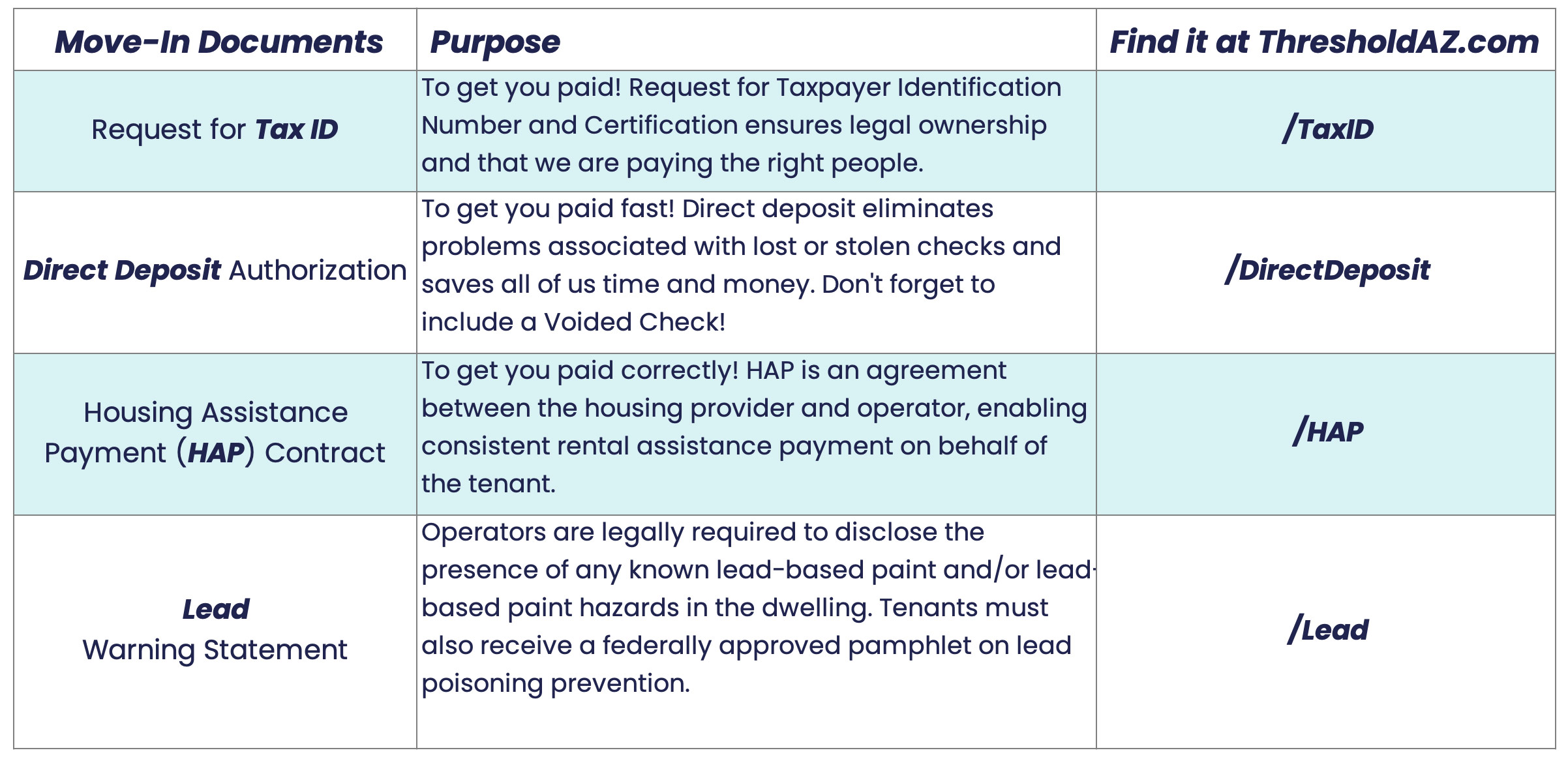Risk Mitigation Guidelines
Threshold by HOM, Inc., is Maricopa County’s centralized landlord liaison service, designed to support scattered-site permanent housing programs in the Maricopa Regional Continuum of Care (CoC). Operated by HOM, Inc., Threshold collaborates with property owners and operators to become active partners in solving homelessness. Unlike other initiatives, Threshold benefits all programs throughout the CoC, not just those operated by HOM and its partners. As the first-ever centralized network for property owners and managers in the Greater Phoenix area, Threshold offers resources and risk mitigation services to help you maintain profitable and well-managed properties. By participating, property owners can provide safe and stable housing for those in need while protecting their investments.
Notable Threshold Contacts
- Chris Hooley, Director of Housing Programs, Landlord Relations: (602) 507-4164 or chrishooley@hominc.com
- Stella Darnall, Landlord Engagement Supervisor: (602) 507-6754 or stella@hominc.com
- Maritza Garcia, Landlord Support Supervisor: (602) 507-6744 or maritza@hominc.com
- Zach Zachman, Inspections Supervisor: (602) 507-4208 or zach@hominc.com
Commitments of HOM, Inc.
Centralized Support
HOM will operate a dedicated hotline staffed by professionals ready to assist you with non-emergency issues related to Threshold-assisted tenants participating housing programs. Emergency situations should be handled by calling 9-1-1. This hotline provides property owners and operators with a centralized point of contact for questions and concerns. HOM will coordinate communication and response with Service Providers to mitigate issues that put the housing stability of program participants at risk.
Risk Mitigation Funds
HOM will regularly contact the owner or operator to support successful tenancies for Threshold-assisted tenants. This helps maintain a strong partnership with property owners. If damages or evictions occur despite these efforts, the operator can request reimbursement. Claims must follow the Risk Mitigation Fund Guidelines for eligible participants’ move-out charges.
 HOM will manage the Threshold Risk Mitigation Fund to protect property owners. It covers up to one month’s contract rent, in addition to any refundable deposit, for move-out charges during a Threshold-assisted tenancy. It also provides up to one month’s contract rent for vacancy loss.
HOM will manage the Threshold Risk Mitigation Fund to protect property owners. It covers up to one month’s contract rent, in addition to any refundable deposit, for move-out charges during a Threshold-assisted tenancy. It also provides up to one month’s contract rent for vacancy loss.
These funds apply to damages or vacancy loss caused during the participant’s tenancy in a HOM program. They also extend to one subsequent lease in the same unit, up to two years after the program ends. HOM will review and process all submitted damage claims and reimburse owners for verified costs.
Risk mitigation funds are intended to reduce the potential loss of a tenancy, not eliminate the risk associated with operating a profitable residential property business. As with all tenancy leases, the owner/operator assumes all financial risk as prescribed in the Arizona Residential Landlord and Tenant Act (ARLTA) when leasing to a Threshold-supported tenant. HOM recognizes property owners and operators make decisions based on potential risk, including the choice to require tenants to acquire renter’s insurance as well as the owner/operator choice to hold active “Landlord Insurance.”
Risk Mitigation Reimbursement Process
Move-Out Inspections
When a tenant vacates the unit, the owner or operator must request a move-out inspection within two business days of regaining possession. This request should go to HOM, Inc. or the case manager.
HOM’s inspections team or the service provider will schedule and complete the inspection promptly. The inspector will take photos and fill out a move-out inspection form.
The owner or operator then has 30 calendar days to submit a Damage Claim and Vacancy Loss Worksheet. Claims should be emailed to damageclaims@hominc.com for reimbursement.
Damage Claims
Vacancy Loss
Through Threshold, HOM also provides reimbursement for vacancy loss at a rate of up to one (1) month’s Contract Rent. Vacancy Loss is paid for the number of days the unit remains vacant beyond the last day of the month that the Tenant vacated, at a prorated rate from the first day of that month to the day of the next lease.
Click here to download/print the Damage Claim and Vacancy Loss Worksheet
Example of Risk Mitigation Reimbursement
Here is an example of how to calculate a risk mitigation reimbursement:















